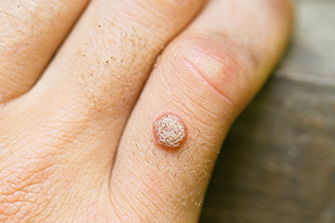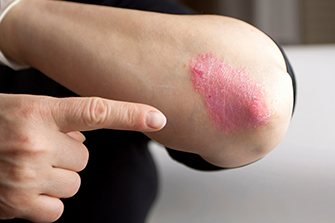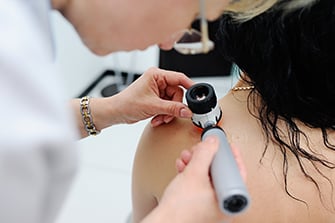How do clinical trials work and who can participate?
Introduction
Clinical trials are research studies aimed at testing new medications, treatments, or strategies to prevent and treat diseases. These studies play a crucial role in advancing medical knowledge by ensuring that medical practices and treatments are safe and effective.
Public participation in clinical trials is essential. It not only helps researchers gather the necessary data but also aids in the development of new treatments that can improve patient care worldwide. Volunteers who participate may have a specific health condition or be healthy individuals willing to contribute to scientific research.
How Clinical Trials Work
Clinical trials typically progress through four phases, each with specific objectives:
- Phase 1: Focuses on evaluating the drug’s safety profile and determining the appropriate dosage.
- Phase 2: Gathers preliminary efficacy data and examines side effects.
- Phase 3: Involves larger populations to confirm benefits and monitor adverse reactions.
- Phase 4: Post-marketing surveillance to assess long-term safety and collect real-world data.
Eligibility Criteria for Participants
Eligibility criteria for clinical trial participants are based on specific inclusion and exclusion factors. These criteria ensure that the study:
- Targets the right population
- Maintains participant safety
- Achieves reliable results
Potential participants must provide informed consent before joining a trial, ensuring they understand the possible risks and benefits.
Living with eczema can be a daily battle, as millions of individuals around the world grapple with the physical and emotional toll of this chronic skin condition. However, amidst the challenges, there is hope on the horizon. Clinical trials, such as those conducted by Cahaba Clinical Research, are playing a pivotal role in shaping the future of eczema treatment, offering new possibilities for patients.
In addition to conditions like eczema, clinical trials also focus on other dermatological issues. For instance, if you are dealing with plaque psoriasis, participating in a clinical trial like the SPECTREM Study being conducted by Cahaba Clinical Research could provide an opportunity to access investigational medications that may significantly improve your quality of life.
These examples highlight how clinical trials are not just limited to finding treatments for diseases but also offer hope and potential solutions for specific health conditions. By joining these trials, individuals can contribute to scientific advancements while receiving the care they need.
Understanding the Phases of Clinical Trials
Clinical trials are conducted in phases, each with its own specific goals and procedures. Phase 1 clinical trials represent the initial step in testing new treatments or medications on human subjects.
Key objectives of phase 1 trials:
- Safety Profile Evaluation: The primary goal is to evaluate the safety of the drug. This involves:
- Monitoring how the drug interacts with the body.
- Identifying any potential side effects.
- Determining Dosage Range: Researchers aim to find the appropriate dosage that balances effectiveness with minimal side effects. They test:
- Different dosages on a small group of volunteers.
- How these dosages affect the participants’ bodies and health.
Characteristics of phase 1 trials:
- Small-scale Studies: Typically involve a limited number of volunteers, often between 20 to 80 participants.
- Healthy Volunteers or Patients: These trials may include healthy individuals or patients, depending on the nature of the treatment being studied.
- Close Monitoring: Participants are closely watched to observe any adverse reactions and to understand how the drug is metabolized and excreted.
To illustrate, consider a hypothetical scenario where a new medication for chronic spontaneous urticaria (hives) undergoes a phase 1 trial at Cahaba Clinical Research. Researchers would:
- Recruit a small group of volunteers who meet specific eligibility criteria.
- Administer varying doses of the medication under strict supervision.
- Collect data on safety, tolerability, and optimal dosing.
Phase 1 trials are crucial because they lay the groundwork for subsequent phases by establishing initial safety and dosage parameters. However, it’s important to note that these trials aren’t restricted to hives alone. For instance, Cahaba Clinical Research also conducts wart clinical trials in Birmingham, providing individuals suffering from persistent warts an opportunity to participate in research aimed at finding long-lasting solutions.
To ensure the success of these trials, centers like Cahaba Clinical Research bring together experienced medical specialists who are passionate about making a positive impact on patients’ lives. Their FDA-governed clinical research studies focus on preventing, detecting, and treating various conditions, ultimately leading to better medicine for everyone.
Phase 2 Clinical Trials
Phase 2 clinical trials build upon the findings from phase 1 by focusing on gathering preliminary efficacy data. These trials involve a larger group of participants, typically ranging from a few dozen to several hundred individuals who have the condition being studied.
Key objectives of phase 2 trials include:
- Evaluating Efficacy: Researchers aim to determine if the new treatment is effective in treating the targeted condition.
- Monitoring Side Effects: By expanding the participant pool, researchers can better understand and document any side effects or adverse reactions.
- Optimising Dosage: This phase helps to refine the dosage and administration method identified during phase 1.
Participants in phase 2 are often closely monitored to assess both the benefits and risks of the treatment. For example, those participating in an Atopic Dermatitis Clinical Trial may be observed for improvements in skin condition and potential side effects.
If you’re interested in learning more about specific studies, you might consider looking into ongoing research such as the Atopic Dermatitis Clinical Trial or studies on conditions like Acute Dermatitis, which can provide valuable insights into these conditions.
This stage is crucial as it provides a clearer picture of how effective a treatment might be before proceeding to larger-scale testing in phase 3.
Phase 3 Clinical Trials
Phase 3 clinical trials represent a critical stage in the clinical trials process. This phase is the last step before potential regulatory approval and involves a much larger group of people compared to earlier phases.
What Happens in Phase 3 Trials?
In Phase 3 trials, several important things occur:
- Large-scale testing: Thousands of participants may be included to ensure the data collected is strong and statistically significant.
- Comparison to existing treatments or placebo: Participants are often divided into different groups, receiving either the new treatment, an existing standard therapy, or a placebo. This comparison helps determine how effective and safe the new treatment is compared to what’s already available.
- Monitoring adverse reactions: Close monitoring occurs to detect any negative side effects. This helps us understand how risky the treatment is when used by a larger group of people.
These trials are crucial for confirming the benefits of a new treatment. For example, if you’re interested in exploring specific studies, such as those for Hidradenitis Suppurativa (HS), you might find relevant ongoing research at Cahaba Clinical Research. They are conducting a research study on HS as part of their clinical trials program, offering an opportunity for individuals to participate and contribute towards advancing treatment options for this condition.
By thoroughly assessing treatments during Phase 3, researchers collect comprehensive data that regulatory bodies like the FDA or EMA need to decide whether a new treatment should be approved for public use.
Phase 4 Clinical Trials
Phase 4 clinical trials, also known as post-marketing surveillance studies, take place after a drug has received regulatory approval and is available for use by the general public. These trials are crucial for gathering extensive data on the long-term safety and effectiveness of treatments in a real-world setting.
Key Objectives of Phase 4 Clinical Trials:
- Long-term Safety Monitoring: Evaluate the long-term effects and safety profile of the drug over an extended period. This helps identify any potential adverse reactions that may not have been evident in earlier phases.
- Effectiveness in Real-world Settings: Assess how well the treatment works in diverse populations outside the controlled environment of previous clinical trial phases. This includes understanding how different demographics respond to the treatment.
- Collecting Additional Data: Obtain additional information on the drug’s benefits and risks, which can inform future medical guidelines and treatment protocols.
Examples and Impact:
- Pharmaceutical companies often conduct phase 4 trials to fulfil regulatory requirements or as part of their commitment to patient safety.
- Data from these studies can lead to updates in labelling, usage recommendations, or even withdrawal from the market if significant risks are identified.
These stages highlight the ongoing nature of clinical research, ensuring that patient safety remains a priority while expanding our understanding of medical treatments.
Becoming a Participant in Clinical Trials
Participating in clinical trials can be a rewarding experience, contributing to the advancement of medical science. Understanding the key aspects involved helps potential participants make informed decisions.
Informed Consent
Informed consent is a fundamental requirement for anyone looking to participate in clinical trials. Before joining, individuals receive detailed information about the study, including:
- The purpose of the trial
- Possible benefits and risks
- Procedures involved
- Duration of participation
This ensures that participants are fully aware of what they are agreeing to, enabling them to make educated choices about their involvement.
Eligibility Criteria
Not everyone can participate in every clinical trial. Researchers use eligibility criteria to select the right participants. These criteria may include:
- Specific medical conditions: Some trials require participants with particular ailments to evaluate treatment efficacy.
- Diversity considerations: It’s crucial to have a diverse participant pool reflecting different ages, genders, ethnicities, and health statuses. This diversity helps ensure that findings are applicable across various populations.
Eligibility requirements help enhance the reliability and applicability of trial results.
Protecting Participant Rights
Participants’ rights are protected throughout the clinical trial process. Key protections include:
- Right to withdraw: Participants can exit the study at any point without facing any penalties or consequences.
- Confidentiality: Personal data and health information are kept confidential and used solely for research purposes.
- Safety monitoring: Ongoing monitoring ensures any adverse effects are promptly addressed, prioritising participant safety.
These measures safeguard participants while contributing valuable data to medical research.
The Team Behind a Clinical Trial
A successful clinical trial relies on the coordinated efforts of a multidisciplinary team. Each member brings specialised skills and plays a critical role in ensuring the trial’s integrity and efficiency.
Principal Investigator (PI)
The PI is often a medical doctor or scientist who leads the clinical trial. They are responsible for:
- Designing the study protocol
- Ensuring compliance with regulatory requirements
- Overseeing patient safety and data integrity
Research Nurses
These professionals are crucial for day-to-day operations. Their responsibilities include:
- Administering treatments and medications
- Monitoring patients for side effects
- Collecting and recording data
Data Managers
They handle the vast amount of information generated during the trial. Key tasks involve:
- Maintaining databases
- Ensuring data accuracy and consistency
- Analysing preliminary results
Clinical Research Coordinators (CRCs)
CRCs act as a bridge between the participants and the research team. Their duties encompass:
- Recruiting and enrolling participants
- Explaining study protocols to volunteers
- Scheduling follow-up visits
Regulatory Affairs Specialists
These experts ensure that the trial adheres to all legal and ethical guidelines. They focus on:
- Preparing regulatory submissions
- Liaising with ethics committees
- Keeping up-to-date with changes in regulations
Each team member’s expertise and dedication contribute to the successful execution of clinical trials, safeguarding both scientific integrity and participant well-being.
Conclusion
Clinical trials play a crucial role in advancing medical research and enhancing patient care. By rigorously testing new treatments and procedures, these studies help ensure that medical practices are both safe and effective.
Why Should You Consider Participating?
Volunteering for clinical trials can be a valuable contribution to scientific knowledge. Participants:
- Help discover new treatments.
- Contribute to medical advancements.
- Potentially gain access to new therapies before they are widely available.
Finding Clinical Trials
For those interested in joining clinical trials, various resources are available:
- Government Registries: Websites like ClinicalTrials.gov offer comprehensive listings of ongoing studies.
- Patient Advocacy Groups: Organisations such as the American Cancer Society often provide information on relevant clinical trials.
Consider participating in a clinical trial if you meet the criteria. Your involvement could make a significant difference in the world of medicine.
FAQs
What is the role of clinical trials in advancing medical knowledge?
Clinical trials play a crucial role in advancing medical knowledge by testing the safety and effectiveness of new treatments, interventions, or medical devices. They help researchers gather valuable data to determine whether a new approach can improve patient outcomes and overall healthcare.
Why is public participation important in clinical trials?
Public participation in clinical trials is essential as it allows researchers to study new treatments across diverse populations, ensuring that the findings are applicable to a wide range of individuals. Additionally, without willing participants, it would be impossible to conduct the research necessary to develop new therapies and improve existing ones.
What are the key objectives of phase 1 clinical trials?
Phase 1 clinical trials primarily focus on evaluating the safety profile of a new drug and determining the appropriate dosage range through small-scale studies with a limited number of volunteers. These trials aim to establish initial safety parameters and identify any potential side effects.
What is the significance of phase 3 clinical trials?
Phase 3 clinical trials are significant as they represent the final stage before potential regulatory approval. These trials involve a much larger population to confirm the treatment’s benefits and monitor any adverse reactions in comparison to existing standard therapies or placebos.
What is informed consent in the context of clinical trials?
Informed consent is an essential process that ensures individuals are fully aware of the potential risks and benefits before deciding to participate in a clinical trial. It involves providing comprehensive information about the study, allowing participants to make an informed decision about their involvement.
Who are the professionals involved in conducting a clinical trial?
The team behind a clinical trial includes various professionals such as the principal investigator, research nurses, and data managers. Each member has specific responsibilities, from overseeing the study’s progress to ensuring accurate record-keeping and patient monitoring.











